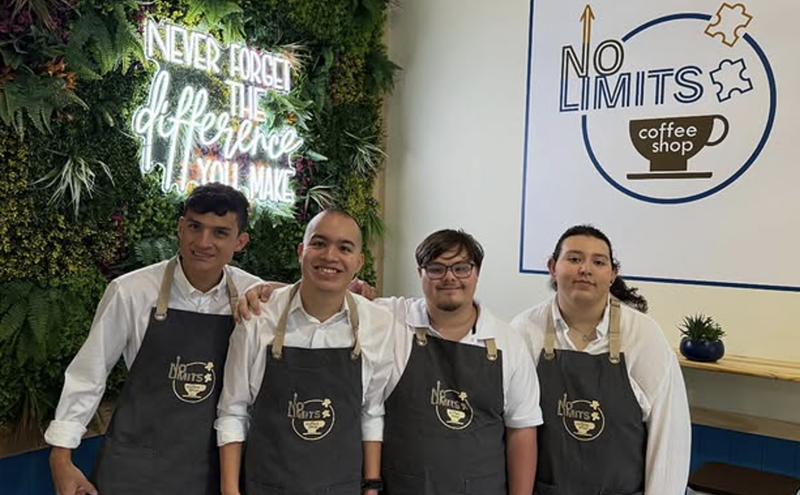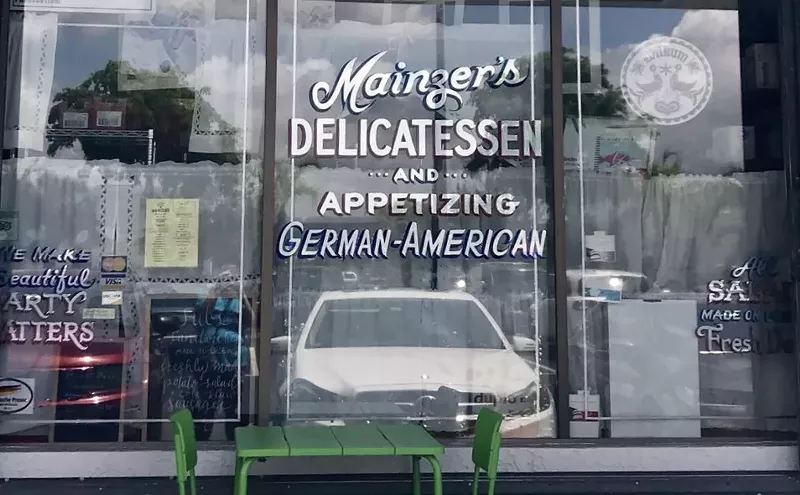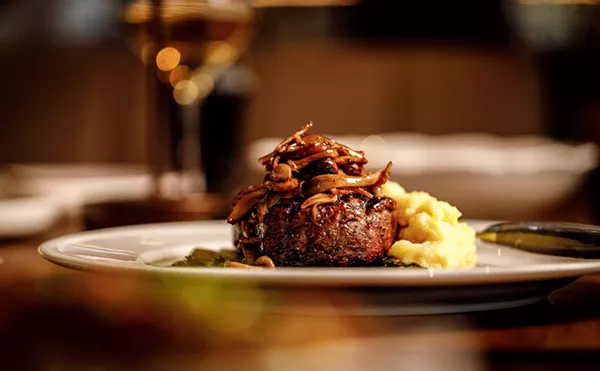Hakkasan is drop-dead gorgeous, a dusky Oriental lair of dining alcoves seductively lighted by Chinese lanterns and separated by walnut and teak latticed screens. Beyond the darkened den lies a lengthy bar backed by faux gray brick with pale waves of light shimmering upon it like sunlight patterns reflected from a swimming pool. (Hakkasan is on the top floor of the Fontainebleau's spa. The actual pool is four floors below.) The 130-seat space, including lounge, has the ambiance of a haute Hong Kong dining establishment; the cuisine is what you'd assume patrons at such places get served.
Décor is not the only note of distinction at Hakkasan. Hostesses, for instance, wear hot pink Alexander McQueen outfits. Perhaps more pertinent, the words Michelin-rated have never been uttered in these parts — and though this third branch, which debuted April 20, is not the recipient of the French guide's accolade (nor is the second, in Istanbul), restaurateur Alan Yau's original in London is the sole such ranked Chinese restaurant in England. Whether our local Hakkasan can ever rise to Michelin status is Mr. Yau's problem; we're just happy to be among the privileged few to get a taste of his Cantonese crowd pleasers.
On second thought, ignore that last sentence and forget we mentioned Michelin; the only thing that can possibly dampen your dining here is unreasonably high expectations. So put visions of live hummingbirds suspended in gold flake-flecked gelatin out of your mind. This is not that type of place. There is Peking duck with golden osetra caviar ($195) and braised Japanese abalone with sea cucumber ($130), but that's as exotic as things get. Many of Hakkasan's dishes are similar to those found at any other Chinese joint. Just much better.
Prices reflect the superiority. But while starters are high (most $12 to $18) and there are a number of expensive entrées involving seafoods and beef, there is also a sizable menu's worth of main courses ranging from $18 to $30 — steep for humble Chinese food, but this Chinese food is anything but.
Dinner started off with a showy puff of steam when our waiter removed the lid from a bamboo basket of dim sum. As the vapor dissipated, glistening orange beads of tobiko sparkled like city lights glimpsed from a plane passing through thin clouds; the caviar crowned a pair of scallop dumplings ensconced in gossamer wrappers. Three other duos in the steamer contained shrimp with minced vegetables and a touch of sesame; shrimp with Chinese chives; and minced wild mushroom and mixed vegetables (dim sum is served with potent soy and two types of chili sauce). For a thicker-skinned variation, try the "grilled Shanghai dumpling" — neither grilled nor singular, but six zesty-fresh chicken-and-vegetable pot stickers lightly griddled and served with gingered soy sauce.
Another excellent appetizer is roast duck breast with mango, dazzlingly arrayed on the plate in equally sized alternating half-moons. The taste was just as inspiring — the bird burst with five-spice flavor, the fruit was perfectly ripe, and a light lemon sauce adeptly cut the sweet richness. This duck preparation, as well as all others on the menu, undergoes the same precooking process: Each bird is stuffed with herbs and then dried for 72 hours to crisp the skin.
Our meals here were jazzed with jasmine tea. We drank some extremely floral cups of it. We sampled jasmine tea-smoked pork ribs, whose soft, aromatic meat slipped off the row of bones like silk kimonos from a chorus line of concubines. And we were downright infatuated by the smoked jasmine flavor imbued in the softest, juiciest chicken breast imaginable, slices of which were capped by crisp, darkly lacquered skin that looked like the duck.
Another showstopper is a juicy wedge of silver cod with champagne-honey sauce. It's a variation on Nobu's (and now everybody else's) renowned black cod with miso glaze. The pearly, translucent flakes of the two cods are similarly textured, and both sauces are sweet but with dry, tart notes. Green, crunchy broccolini-like stalks of gai lan (Chinese kale or broccoli) were spread beneath the fish; three chips of fried lotus root formed a fan on top.
Five-spice seasonings seeped into slices of Wagyu beef that were tenderly braised and stewed in a clay pot with cooked mooli (also known as Japanese radish, the taste akin to a mild white carrot). Even better: six succulent scallops wokked with crescents of pumpkin squash and mild shiso leaf in a keenly spicy black bean sauce.
Dried shrimp-fried rice is not at all fishy, as some might fear; the teeny crustaceans look and taste more like minuscule zeppole. The pale jasmine rice is light on soy, gently pan-fried (seemingly by the order), and flecked with egg whites and precious few scallions. It plays a quiet supporting role to the robust fare, but so could an order of spring onion/egg-fried rice at half the price.
A global wine menu, categorized into Purity, Terroir, and Curious Vines, is mindful of the pairing challenges posed by potent Chinese seasonings. The sommelier is the sort who will cheerfully work with you even if it entails a single glass of wine. Bartenders are able as well: Try the signature Hakka, a blend of vodka, Kubota sake, litchi juice, lime, coconut, and fresh passion fruit. Some of the front-of-house staff was snooty, but waiters were knowledgeable and very efficient — if not close to Michelin standards.
Because the cuisine is assertively punctuated with five-spice, red chili, dried shrimp, preserved bean curd, jasmine, soy, smoke, and the like, the palate craves a light, cool dessert. Hakkasan complies with a bevy of such treats, one of the best being ripe berries with gelatinous Prosecco and a melon-drenched quenelle of cantaloupe sorbet on top. A petite and peerless pandan leaf soufflé oozing lusciously within came subtly perfumed with the delicate jasmine/vanilla-flavored leaf; a knockout coconut sorbet was scooped on the side. Chocolate-banana fondant fizzled by comparison — the main component a petite but rich dark chocolate molten cake with nary a hint of banana; a small scoop of soft banana ice cream on the side barely registered the fruit flavor either.
A mild letdown occurred upon the realization no fortune cookies were forthcoming (I know these are American, but that's the point). Then again, it doesn't take Confucius to prophesy that dinner at Hakkasan will bring many pleasures. It will likewise leave you fully sated — so much so that my only real quibble with our Chinese feast is that 16 hours later, I was hungry again.












